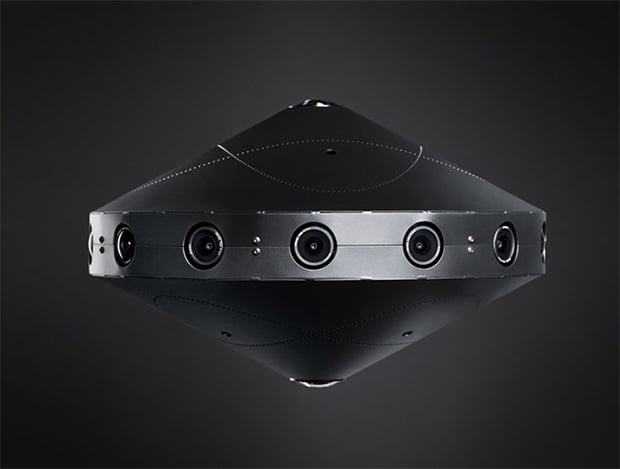Facebook Unveils Surround 360 Open Source VR Camera At F8 Conference

As the owner of Oculus and its Rift headset, social networking giant Facebook has an obvious vested interest in virtual reality. For VR to succeed, there needs to be compelling content that will make people buy the hardware and jump on the bandwagon, and to ensure that content creators have the tools they need, Facebook today introduced a 360-degree camera at its F8 Conference.
Appropriately enough, the prototype camera is part of a high quality, 3D video capture system called Surround 360. The camera itself features 14 wide-angle cameras that circle what looks like a UFO attached to a stick. There's also a fish-eye camera on top and two more on the bottom for a total of 17 lenses.
The Surround 360 can output content at 4K, 6K, and 8K resolution per eye. Facebook says that due to the high bandwidth and data demands, 6K and 8K output uses its Dynamic Streaming codec for Gear VR. Regardless of resolution, the output file can be viewed in VR headsets like the Rift and Gear VR. It can also be shared on social media such as Facebook, "in which case only one of the monoscopic views is displayed when you're scrolling through News Feed, but the full stereo is downloadable."
Facebook isn't the first one to release a 3D camera with 360 degrees of recording for the VR crowd, but forged ahead anyway because it wasn't happy with the current solutions.

"When we started this project, all the existing 3D-360 video cameras we saw were either proprietary (so the community could not access those designs), available only by special request, or fundamentally unreliable as an end-to-end system in a production environment. In most cases, the cameras in these systems would overheat, the rigs weren't sturdy enough to mount to production gear, and the stitching would take a prohibitively long time because it had to be done by hand," Facebook says.
Facebook is trying to solve all those problems with Surround 360. If you buy into the $30,000 system, you can capture and edit content with little post production work. Furthermore, Facebook plans to post its hardware design and video stitching code to GitHub later this summer making it open source to "accelerate the growth of the 3D-360 ecosystem—developers can leverage the designs and code, and content creators an use the camera in their production."
What Facebook has done is pave the way for others to follow. Facebook doesn't have plans of selling a camera of its own, but any hardware manufacturer can grab its blueprint and run with the design.

